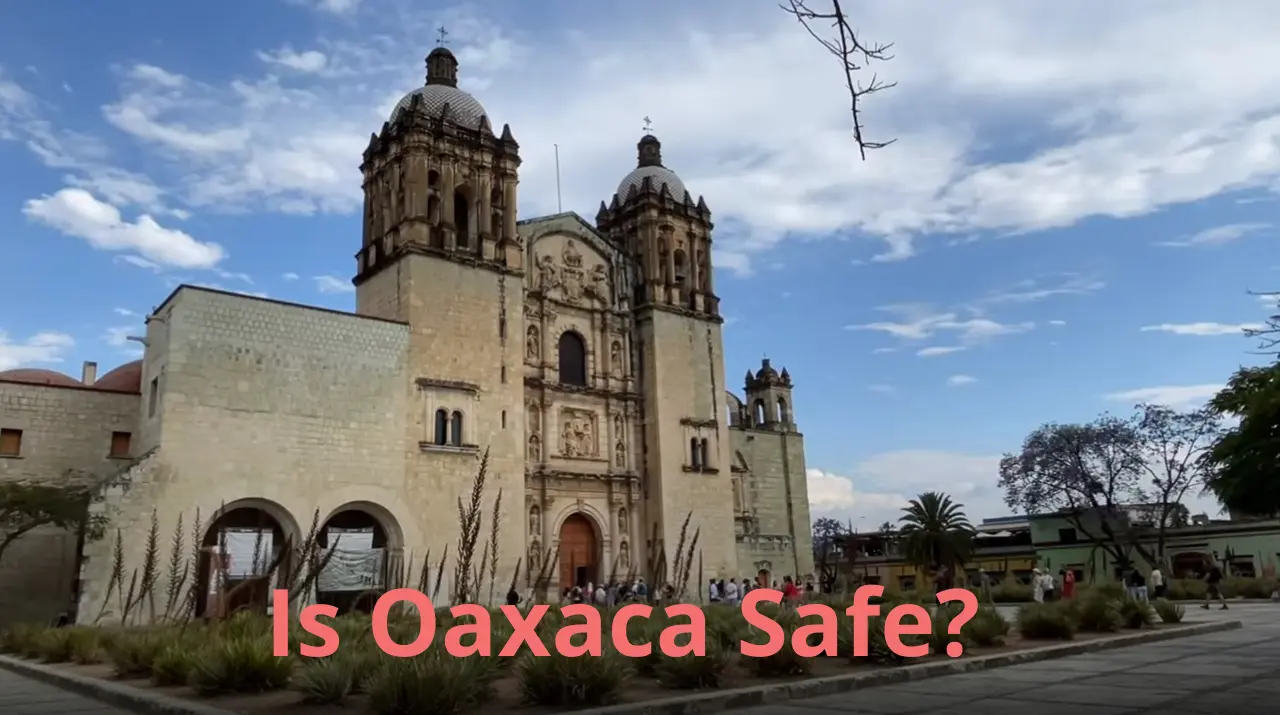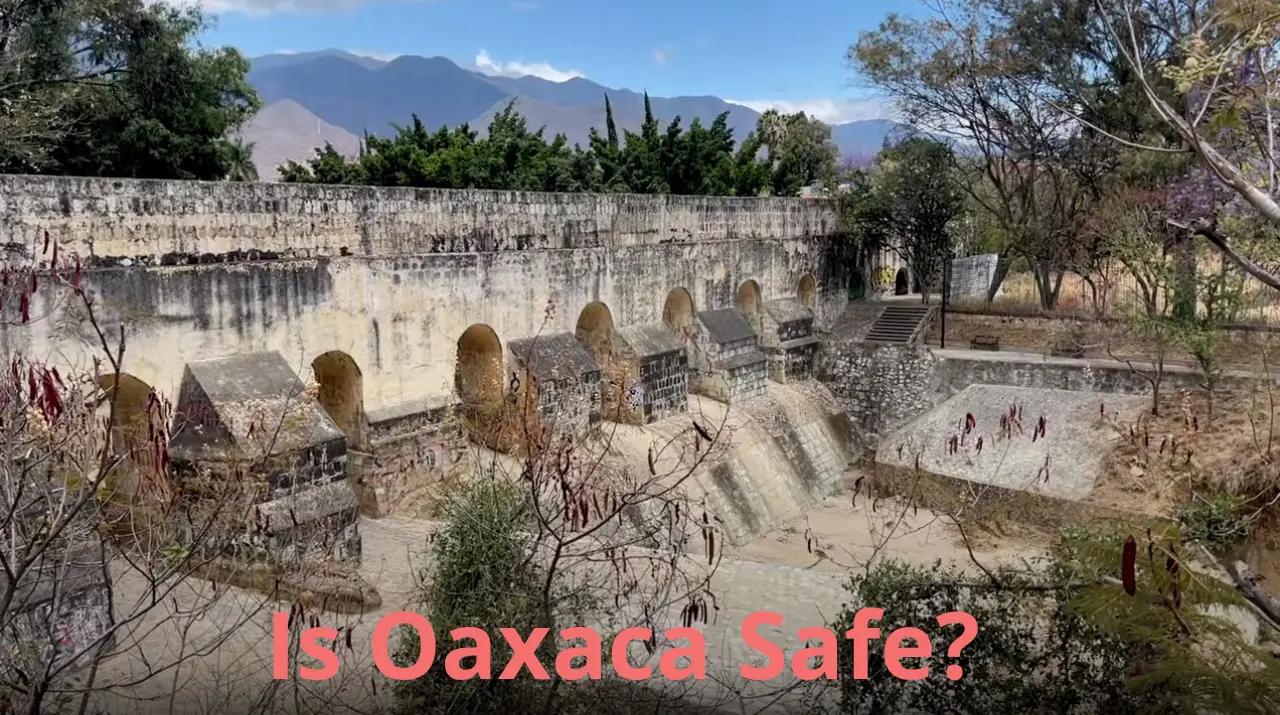Is Oaxaca Safe? A Comprehensive Travel Guide

Introduction
Nestled in the heart of Mexico, Oaxaca is a region celebrated for its rich tapestry of cultures, vibrant art scenes, and breathtaking natural landscapes. From the bustling streets of Oaxaca City to the serene beaches of Puerto Escondido, this enchanting region offers a myriad of experiences that draw travelers from around the globe. However, as with any destination, questions about safety often arise, casting a shadow of concern over prospective visitors' plans. "Is Oaxaca safe?" is not just a question—it's a doorway to understanding the complexities of travel in this diverse region.
In this comprehensive guide, we peel back the layers of perception and reality to provide a nuanced look at safety in Oaxaca. Whether you're dreaming of exploring ancient Zapotec ruins, savoring the depth of Oaxacan cuisine, or simply soaking in the sun on pristine beaches, understanding the safety landscape is crucial. We delve into the latest statistics, personal anecdotes, and expert advice to offer a balanced view that goes beyond headlines.
Current Safety Overview in Oaxaca
Statistically, Oaxaca stands as one of the safer states in Mexico, particularly when compared to regions with higher profiles for crime. According to recent crime statistics and safety reports, Oaxaca has lower rates of violent crime and theft than the national average. This data suggests that, for the average traveler, Oaxaca presents a relatively low-risk environment. However, it's crucial to remain vigilant, as petty crimes like pickpocketing and minor thefts can occur, especially in crowded markets or tourist areas.
Travel advisories from various governments provide valuable insights into safety conditions. As of the latest updates, most advisories highlight that while travel to Oaxaca is generally considered safe, visitors should exercise standard precautions. It's advisable to stay informed about the areas you plan to visit and any recent developments that could affect safety.
Types of Safety Concerns
Petty crime, including pickpocketing and bag snatching, remains the most prevalent safety concern for travelers in Oaxaca. These incidents are more likely to occur in crowded places, such as markets, public transportation hubs, and popular tourist attractions. To mitigate these risks, travelers are advised to:
- Keep valuables secure and out of sight.
- Use anti-theft bags or backpacks.
- Stay alert in crowded areas and avoid displaying expensive gadgets or jewelry conspicuously.
While violent crimes are significantly less common in Oaxaca than in some other regions of Mexico, they are not unheard of. Tourists are rarely targeted, but it's important to stay informed about the areas you plan to visit and avoid known trouble spots, especially after dark.
Health and environmental safety are also important considerations when visiting Oaxaca. Travelers should be aware of water safety, food safety tips, vaccinations, and health precautions before traveling, as well as coping with altitude and heat.
Regional Safety Differences
Oaxaca's allure is as diverse as its geography, ranging from the bustling streets of Oaxaca City to the tranquil shores of its coastal towns and the serene landscapes of its rural settings. Each region boasts its unique charm and safety profile, making it essential for travelers to understand these differences to navigate the state safely.
Oaxaca City: A Cultural Hub
Oaxaca City, the state's cultural and political heart, is generally considered safe for tourists. The historic center, in particular, is well-policed and frequented by international visitors. However, like any busy urban area, it attracts petty criminals targeting unwary tourists. Vigilance in crowded markets and tourist sites, especially after dark, can mitigate risks. The city's vibrant nightlife should be enjoyed with caution, sticking to well-lit, populated areas and using reputable taxi services for late-night returns to your accommodation.
Coastal Regions: Idyllic yet Cautious
The Oaxacan coast, known for its idyllic beaches and laid-back atmosphere, offers a relatively safe haven for travelers. Destinations like Puerto Escondido and Huatulco are popular among surfers and sun-seekers, with a strong presence of both local and international tourists. While these areas are conducive to relaxation, visitors should remain mindful of their belongings on the beach and be wary of riptides that make certain beaches unsafe for swimming. Nighttime safety on the beach and in less frequented areas requires attention, as isolated spots can be riskier after sundown.
Rural Areas: Authentic Experiences with Precautions
Exploring the rural landscapes of Oaxaca allows travelers to experience the state's rich indigenous cultures and traditions firsthand. While these areas are generally safe and locals are welcoming, the lack of infrastructure can pose its own risks. Poorly maintained roads and limited access to emergency services necessitate careful planning. Travelers are encouraged to travel during daylight hours, preferably in groups or with a guide familiar with the area. Respect for local customs and traditions is paramount in these communities, enhancing both safety and the overall experience.
Staying Informed
Regardless of where you are in Oaxaca, staying informed about the latest local news and travel advisories is crucial. Certain areas may experience temporary safety concerns due to political demonstrations or natural events. Consulting with local residents, your accommodation hosts, and other travelers can provide valuable insights into current conditions and areas to avoid.

Actionable Insights for Navigating Regional Safety
- Research: Before your trip, gather information on the specific regions of Oaxaca you plan to visit. Online forums, travel guides, and government travel advisories offer up-to-date information.
- Local Knowledge: Engage with locals and other travelers upon arrival for the latest advice on safe areas and places to avoid.
- Transportation Safety: In all regions, prefer official taxi services or reputable ride-sharing apps, especially at night.
- Respect Local Customs: Showing respect for local traditions and customs can significantly enhance your safety and overall experience in Oaxaca.
By understanding and respecting the regional safety differences within Oaxaca, travelers can enjoy a rich and fulfilling journey through this diverse and captivating Mexican state. Whether you're drawn to its cultural heartbeat in Oaxaca City, the serene beauty of its coastal retreats, or the untouched landscapes of its rural areas, a mindful approach to safety will pave the way for an unforgettable adventure.
Safety Tips for Travelers
Ensuring a safe trip to Oaxaca goes beyond understanding regional differences. Here are comprehensive safety tips covering before you leave, while you're there, and how to handle health concerns, ensuring travelers can fully enjoy Oaxaca's offerings without undue worry.
Before You Go
- Research and Planning: Gather as much information as possible about your destinations within Oaxaca, focusing on safety, local laws, and cultural norms. Resources like travel blogs, forums, and official government travel advisories are invaluable.
- Travel Insurance: Securing comprehensive travel insurance that covers theft, loss, medical emergencies, and activities you plan to engage in is crucial.
- Document Copies: Keep digital and physical copies of important documents like your passport, travel insurance details, and emergency contacts.

While You're There
- Stay Connected: Ensure you have a reliable means of communication. Consider purchasing a local SIM card or arranging an international plan to keep in touch with family and ensure you can contact emergency services if needed.
- Transportation Wisdom: Favor reputable taxi services and be cautious when using public transport, especially at night. If renting a vehicle, familiarize yourself with local driving laws and conditions.
- Accommodation Safety: Choose accommodations with positive safety reviews and in safe areas. Utilize hotel safes for valuables and always double-check locks on doors and windows.
- Be Streetwise: Awareness and caution in public areas can prevent most petty crimes. Avoid ostentatious displays of wealth and keep essential items secure and discreet.
Staying Healthy
- Food and Water Precautions: Opt for bottled water and ensure food is cooked thoroughly. Street food can be a delightful part of the Oaxaca experience if chosen carefully.
- Healthcare Preparation: Visit a travel clinic for vaccinations and health advice specific to Oaxaca. Pack a travel health kit with essentials like medication for traveler's diarrhea, rehydration salts, and insect repellent.
- Adapt to the Environment: Be mindful of Oaxaca's varied climates. Stay hydrated, use sun protection, and dress appropriately for the weather and altitude.
Experiencing Oaxaca Safely
Oaxaca is a tapestry of experiences, from its rich cultural festivals and historical sites to its breathtaking natural landscapes and adventurous activities. Here's how to safely immerse yourself in all it has to offer:
- Cultural Insights: When attending local festivals or visiting sacred sites, respect the customs and guidance of locals. Crowded events require extra vigilance with personal belongings.
- Outdoor Adventures: For those drawn to Oaxaca's natural beauty, whether hiking in the mountains or surfing along the coast, always inform someone of your plans and consider the services of local guides for more remote or challenging activities.
- Beach Safety: Enjoy Oaxaca’s beautiful beaches with care. Heed local advice about swimming conditions and safeguard your belongings when dipping into the ocean.
Legal and Emergency Information
Understanding Oaxaca's legal environment and knowing how to respond in emergencies are crucial:
- Local Laws and Customs: Familiarize yourself with Mexican laws affecting tourists, including those regarding drug use, alcohol consumption, and behavior at cultural sites.
- Emergency Contacts: Keep a list of emergency numbers, including local police, medical services, and your embassy or consulate. Know the location of the nearest hospital or clinic to your accommodation.
- Natural Disaster Preparedness: Oaxaca can experience earthquakes and severe weather. Learn basic safety measures for these events, such as evacuation routes and emergency shelter locations.
FAQs
Is Oaxaca LGBTQ+ Friendly?
Oaxaca is generally welcoming to LGBTQ+ travelers, with a growing community and visibility, especially in urban areas. However, discretion is advised in rural areas.
What Are the Safest Areas in Oaxaca?
Oaxaca City, especially the historic center, is considered safe for tourists, as are popular coastal destinations like Puerto Escondido and Huatulco. These areas are well-traveled and equipped with resources to assist visitors. Always check the latest travel advisories and local news for the most current information.
Can I Use Credit Cards Widely in Oaxaca?
Major tourist areas accept credit cards, but having cash is essential, especially in smaller towns and for local vendors.
What Should I Pack for Oaxaca?
Pack for varied climates, including lightweight clothing for the coast and warmer layers for the highlands. Don’t forget sun protection, comfortable walking shoes, and a reusable water bottle.
What Should I Do in Case of an Emergency?
In case of an emergency, dial the national emergency number (911) in Mexico for immediate assistance. Keep a list of emergency contacts, including local emergency services and your embassy or consulate, easily accessible. Informing your accommodation about your whereabouts and expected return times can also add an extra layer of safety.
Are there Health Concerns I Should Be Aware Of?
Before traveling to Oaxaca, visiting a travel clinic for advice on vaccinations and health precautions is wise. Protecting yourself from mosquito-borne diseases with repellent and appropriate clothing is recommended. Also, be cautious with sun exposure and stay hydrated, especially in coastal and high-altitude areas.
How Can I Respect Local Customs and Traditions?
Learning about Oaxaca's customs and traditions before your visit can enhance your experience and show respect for the local culture. Simple gestures like greeting people in Spanish, asking permission before taking photos, and respecting sacred sites and traditions can make a significant difference in how you're received by locals.
Is Public Transportation Safe in Oaxaca?
Public transportation in Oaxaca is generally safe, but it's important to remain vigilant, especially in crowded conditions. Opt for official taxis or reputable ride-sharing services for safer travel options, particularly at night.
Conclusion
Oaxaca beckons with its unparalleled cultural richness, natural beauty, and culinary excellence. By approaching your visit with awareness, respect, and preparation, you can navigate the safety concerns that come with any travel destination. Embrace the vibrant life of Oaxaca City, the serene beaches of its coasts, and the untouched beauty of its rural areas with confidence and curiosity. Armed with the insights from this guide, you’re ready to explore the enchanting state of Oaxaca safely and enjoyably, making memories that will last a lifetime.